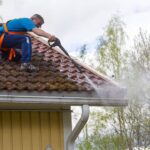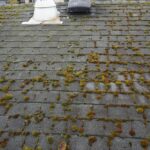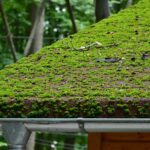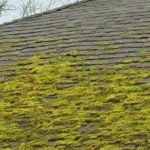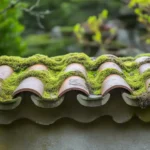Winter can be a magical season with its beautiful snow-covered landscapes. However, for homeowners, it can also bring challenges like ice buildup on the roof. This common issue not only threatens the structural integrity of your home but also poses safety risks. If left unaddressed, it can lead to leaks, water damage, and even roof collapse. Therefore, understanding how to remove ice buildup on roof is crucial for every homeowner.
The process of removing ice from your roof should be done carefully to avoid causing damage to your roofing materials. In this article, we will explore effective methods to safely eliminate ice buildup, as well as preventive measures to stop it from occurring in the first place.

Understanding Ice Buildup on Roofs
What Causes Ice Buildup?
Ice buildup, commonly referred to as ice dams, forms when the heat from your home escapes through the roof, melting the snow. As the melted snow runs down, it refreezes at the roof’s edge, creating a dam that traps additional melting snow. This process leads to the accumulation of ice, which can cause significant problems if not addressed.
Why Is Ice Buildup a Problem?
Ice dams can result in water seeping under shingles, causing leaks and water damage inside your home. This can lead to costly repairs and mold growth. Moreover, the excessive weight of ice can strain your roof structure, increasing the risk of structural damage.
Safe Methods to Remove Ice Buildup
1. Use a Roof Rake
A roof rake is a long-handled tool designed to remove snow from roofs. By clearing the snow, you minimize the chances of ice dams forming. Gently rake off the snow starting from the edge, being careful not to damage the shingles.
2. Apply Calcium Chloride
Calcium chloride is an effective de-icing agent that can help melt ice dams. Place the pellets in a nylon stocking and position it vertically across the ice dam. This will create a channel for the melted ice to flow off the roof. Avoid using rock salt, as it can damage your roofing materials.
3. Install Heat Cables
Heat cables, also known as heat tape, are an excellent solution for preventing and removing ice dams. These cables are installed along the roof’s edge and gutters, providing enough heat to melt the ice and snow.
Preventing Ice Buildup
1. Improve Attic Insulation
One of the primary reasons for ice dams is inadequate attic insulation. Ensuring your attic is well-insulated will help prevent heat from escaping through the roof, reducing the risk of ice dam formation.
2. Ensure Proper Ventilation
Adequate ventilation in your attic helps regulate the temperature, preventing the heat buildup that leads to ice dams. Make sure your attic has proper vents and that they are not blocked by insulation or other obstructions.
3. Regular Roof Maintenance
Regularly inspecting your roof for damage and addressing any issues promptly can help prevent ice dams. Read more on roof inspection tips to ensure your roof is in top condition.
4. Install Ice and Water Shield
An ice and water shield is a self-adhesive membrane applied to the roof deck. It provides an additional layer of protection against water infiltration, especially in areas where ice dams are common.
Professional Ice Removal Services
If you’re unable to safely remove ice buildup on your own, consider hiring a professional service. Professionals have the necessary tools and experience to effectively remove ice dams without damaging your roof.
Conclusion
Understanding how to remove ice buildup on roof is essential for maintaining the safety and integrity of your home during winter. By employing the methods discussed in this article, you can prevent and address ice dams effectively. Remember, prevention is always better than cure, so take steps to minimize the risk of ice buildup before winter arrives.
For more tips on prolonging the lifespan of your roof, visit HouseLogic.

FAQs
What should I do if ice dams cause a leak?
If you notice a leak caused by an ice dam, remove the snow and ice from the roof and use a fan to dry out the affected area. It’s essential to address the leak promptly to prevent further damage.
Can ice dams damage my roof?
Yes, ice dams can cause significant damage to your roof by allowing water to seep under the shingles. This can lead to leaks, rot, and structural damage if not addressed.
Are heat cables safe for all roofs?
Heat cables are generally safe for most roofs, but it’s essential to follow the manufacturer’s instructions and consult with a professional if you’re unsure about installation.
This article contains affiliate links. We may earn a commission at no extra cost to you.




